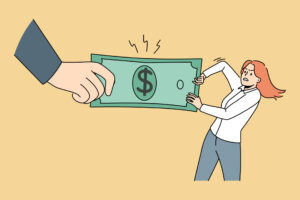Profit and Loss Tips for Home-based Businesses
The home-based business trend has been on the rise for the past few years, and the reasons aren’t hard to guess. Lower overhead costs, flexibility in work hours, and the allure of being one’s own boss make this a lucrative venture. However, managing finances is pivotal to the success of any business, more so for a home-based setup. Let’s explore some essential profit and loss tips that can help home-based entrepreneurs thrive in this competitive environment.
1. Establish Clear Financial Boundaries
While working from home, it’s easy to mix personal and business finances. To keep a clear view of your business’s profitability, open a separate bank account. This allows for easier tracking of business expenses and revenues, simplifying profit and loss calculations.
2. Keep Immaculate Records

Track every penny that goes in and out of your business. Use accounting software or hire a professional to ensure your financial records are spot on. This not only aids in determining profitability but also proves invaluable during tax season.
3. Evaluate Fixed and Variable Costs
Understanding your fixed costs (like software subscriptions or rental space, if any) and variable costs (like advertising or raw materials) is key. By monitoring these costs, you can adjust prices or reduce unnecessary expenses to maximize profit.
4. Set Realistic Pricing
Many home-based businesses make the mistake of underpricing their products or services to beat the competition. While competitive pricing is essential, ensure it covers all costs and still leaves room for profit.
5. Regularly Review Profit and Loss Statements
Don’t wait for year-end to assess your financial performance. Regularly reviewing your profit and loss statements can provide insights into trends, helping you make informed decisions.
6. Understand Seasonal Trends
If your business sees seasonal fluctuations, plan ahead. Save during peak seasons to cover lean periods, ensuring steady cash flow throughout the year.
7. Utilize Tax Deductions
Home-based businesses often qualify for numerous tax deductions – from home office expenses to mileage. Familiarize yourself with these deductions or consult a tax professional to take full advantage.
8. Reinvest Profits Wisely
Once you start seeing a profit, consider reinvesting a portion back into the business. Whether it’s upgrading equipment, investing in training, or expanding your product line, wise reinvestment can spur growth.
9. Avoid Unnecessary Expenses
It’s tempting to splurge on the latest software or marketing gimmick, but always ask yourself if it’s essential. Will it increase your profitability or just add to your costs?
10. Plan for Contingencies
Unexpected expenses can arise – equipment can break, or a client may delay payment. Having a contingency fund ensures your business runs smoothly, even during rough patches.
11. Network with Other Home-based Entrepreneurs
Interacting with fellow entrepreneurs can offer fresh perspectives, new strategies, and sometimes, cost-effective collaboration opportunities. A strong network can have significant influence.
12. Continuously Educate Yourself
The business landscape is ever evolving. Stay updated with industry trends, financial management strategies, and emerging tools that can boost your business’s profitability.
13. Offer Multiple Payment Options
In this digital age, consumers appreciate convenience. Offering multiple payment options can lead to increased sales, positively impacting your bottom line.
14. Embrace Technology for Financial Management
In today’s tech-savvy world, numerous software and apps are available to assist with financial management. Tools like QuickBooks, FreshBooks, or Wave can streamline invoicing, expense tracking, and profit analysis. Leveraging these tools not only simplifies your financial tasks but also provides a more accurate picture of your business health.
15. Set Aside Money for Taxes
One common pitfall for many home-based businesses is not planning for taxes. Since you don’t have an employer withholding taxes from your paycheck, it’s crucial to set aside a portion of your earnings. Consider opening a separate bank account specifically for this purpose. It reduces the chances of spending money meant for taxes and helps avoid potential financial hardships during tax season.
16. Seek Professional Advice
While managing most aspects of a home-based business is possible independently, sometimes getting professional advice can be invaluable. Hiring an accountant or financial consultant, even for a short term, can provide insights into cost-saving measures, tax breaks, or profitability strategies you might not be aware of.
17. Diversify Revenue Streams
Putting all your eggs in one basket, in terms of products or services, is a gamble. Consider diversifying your offerings or exploring affiliate marketing, online courses, or digital products. Multiple revenue streams can lead to more consistent income and cushion the business during downturns in one area.
18. Monitor Cash Flow Closely
Cash flow – the money coming in and going out – is the lifeblood of any business. Regularly monitoring it ensures you have a clear understanding of your business’s financial health. Tools and software can generate cash flow statements, providing insights into areas that might need attention.
19. Offer Discounts Strategically
While discounts can attract customers, they also reduce profit margins. Offer them strategically. For instance, provide discounts on bulk purchases or to loyal customers. This not only incentivizes sales but also ensures a consistent customer base.
20. Analyze and Adapt
The business environment is dynamic. What worked last year might not be as effective today. Regularly analyze your profit and loss strategies. Are there new expenses to consider? Is a particular marketing strategy not providing a good ROI? By being adaptable, you ensure that your business remains profitable amidst changing circumstances.
Navigating the financial landscape of a home-based business can seem daunting. However, with careful planning, continuous learning, and adaptability, success is within reach. It’s about more than just making money; it’s about understanding where it comes from and where it goes. Employing the profit and loss tips provided not only sets the stage for immediate gains but also lays a foundation for sustained growth and success. Regular analysis, strategic decisions, and staying informed will ensure that home-based entrepreneurs remain profitable amidst the ever-changing business environment.
Profit and Loss Tips for Home-based Businesses Read More »

